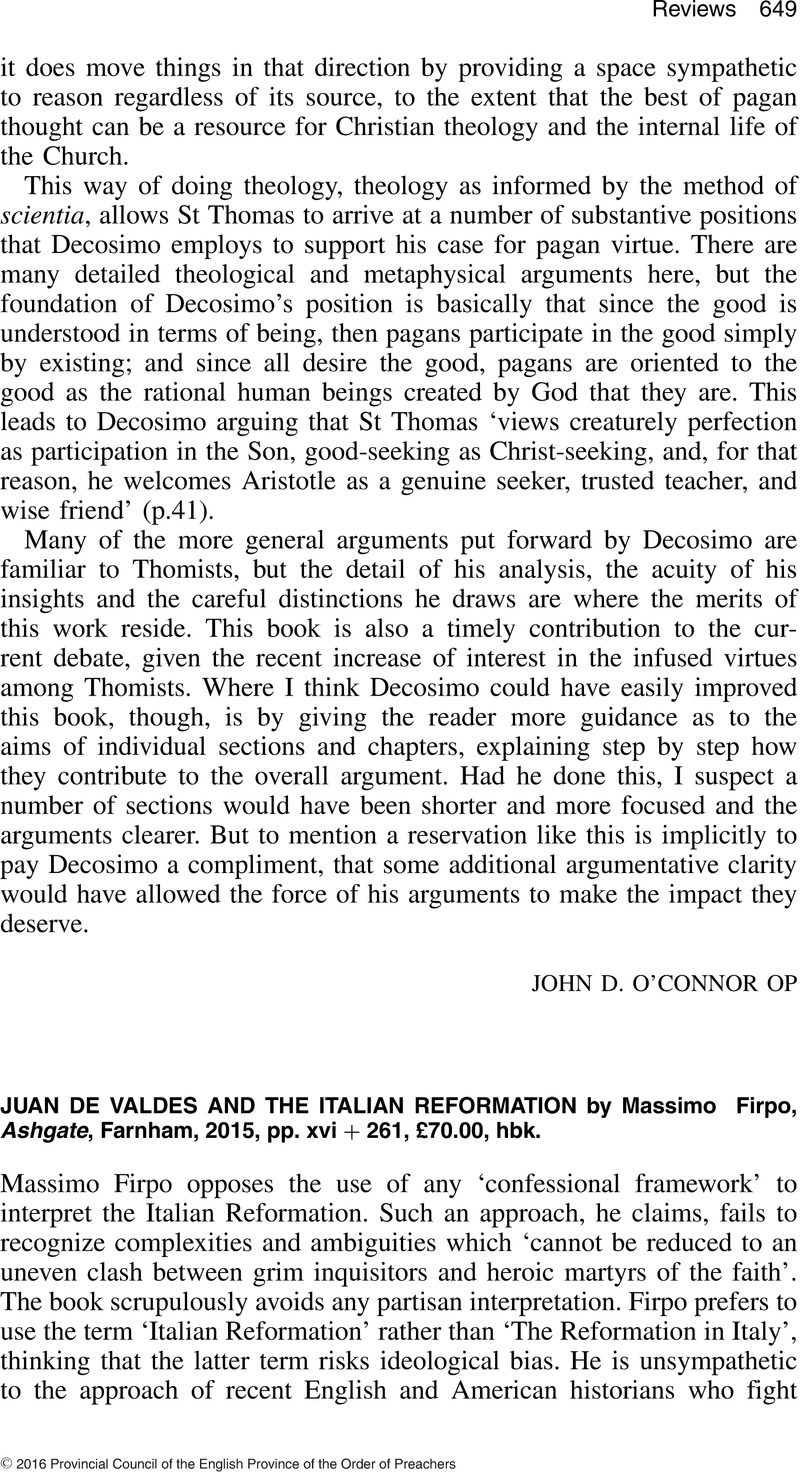No CrossRef data available.
Article contents
Juan De Valdes and the Italian Reformation by Massimo Firpo, Ashgate, Farnham, 2015, pp. xvi + 261, £70.00, hbk.
Review products
Juan De Valdes and the Italian Reformation by Massimo Firpo, Ashgate, Farnham, 2015, pp. xvi + 261, £70.00, hbk.
Published online by Cambridge University Press: 01 January 2024
Abstract
An abstract is not available for this content so a preview has been provided. Please use the Get access link above for information on how to access this content.

- Type
- Reviews
- Information
- Copyright
- Copyright © 2016 Provincial Council of the English Province of the Order of Preachers


